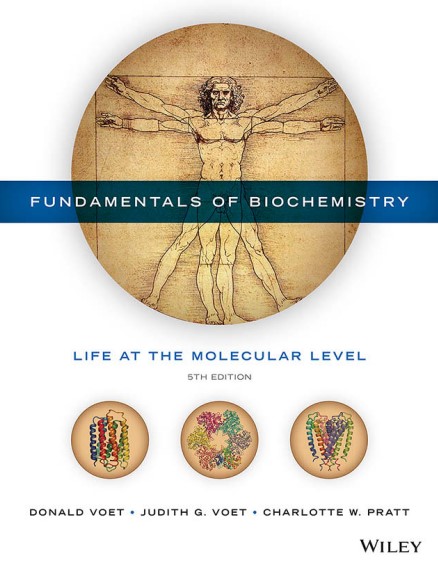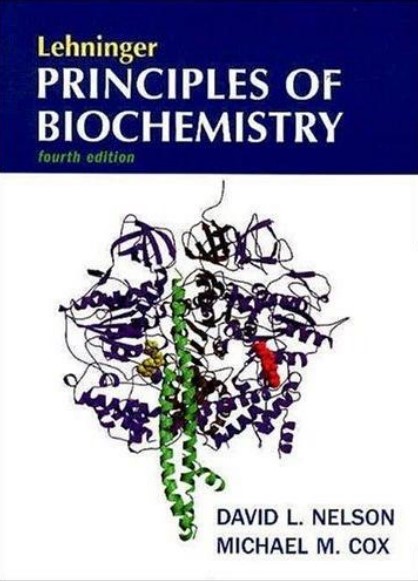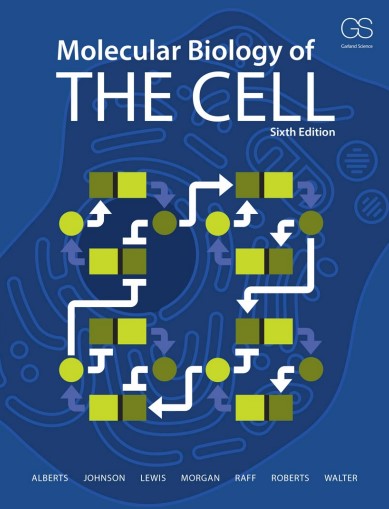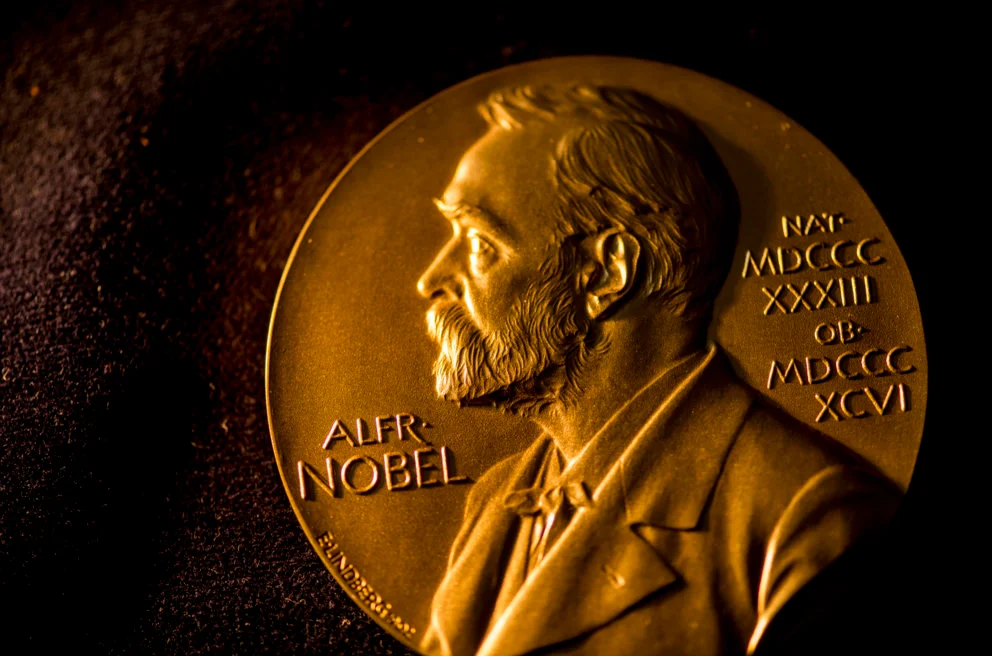Cellular Metabolism and Signaling
Our cells engage in protein production, and many of those proteins are enzymes responsible for the chemistry of life.
— Randy Schekman
I. Cell metabolism
-
Structure Biology of the Citric Acid Cycle: The citric acid cycle is at the center of cellular metabolism. It plays a starring role in both the process of energy production and biosynthesis. [PDF]
-
Regulation of Cholesterol Synthesis:
-
Discovery of receptor-mediated endocytosis (RME) of LDL: Michael S. Brown and Joseph L. Goldstein.
-
Part 1: Feedback Regulation of HMG CoA Reductase [iBiology Talk video]
-
Part 2: Schnyder Corneal Dystrophy: Importance of UBIAD1 in Regulation of Cholesterol [iBiology Talk video]
-
Goldstein, Joseph L., and Michael S. Brown. “A Century of Cholesterol and Coronaries: From Plaques to Genes and Statins.” Cell 161, no. 1 (2015): 161–72. [PDF | PMID: 25815993 | DOI Link]
-
Question at 1970s:
- Receptors on the plasma membrane communicate with proteins in the nucleus, endoplasmic reticulum, lysosomes, mitochondria, and other structures, how is this cell-wide communication articulated ?
- How does a cell regulate a metabolic pathway whose active components reside in different subcellular compartments ?
-
-
Regulation of Energy metabolism
- Review in 1979: METABOLITE TRANSPORT IN MITOCHONDRIA
- internal energy stress sensing and response program in brain ?
-
Lysosome role in metabolic signalling
- Discovery of Lysosome: [Christian de Duve, 1959]
- Review in 2019: The lysosome as a cellular centre for signalling, metabolism and quality control (Rosalie and Roberto, 2019) [PDF | PMID: 30602725 | DOI Link]
- mTORC1 activation of Lysosomal membrane:
-
Nutrient sensing machinery
-
Cholesterol:
— LYsosomal CHOlesterol Signaling protein (LYCHOS, previously annotated as G-protein coupled receptor 155), Reported at 25-Aug-2022 [PDF | PMID:36007018 | DOI Link]
— PATCHED,
— HMG-CoA reductase,
— Niemann-Pick type C protein 1 (NPC1), Reported at 11-Jul-1997 [PDF | PMID:9211849 | DOI Link]
— SREBP(Sterol regulatory element-binding protein),
— SREBP cleavage-activating protein (SCAP), -
Amino acids:
Review: The Dawn of the Age of Amino Acid Sensors for the mTORC1 Pathway (Wolfson and Sabatini, 2017) [PDF | PMID:28768171 | DOI Link]
— Leucine > Sestrin2
— Arginine(Cytosolic) > CASTOR1 [(David M Sabatini’s lab, 24/03/2016) | PMID: 26972053]
— Arginine(Cytosolic) > RBM39 [(Michael N Hall’s lab, 09/11/2023) | PMID: 37804830]
— Arginine(lysosomal) > SLC38A9
— S-adenosylmethionine > SAMTOR
— S-adenosylmethionine > Unmet(Fly specific)
GATOR2 > Nutrient sensing hub! [CryoEM Structure of human GATOR2 complex | Valenstein et al., 2025] -
Glucose:
— AMPK -
Nitrogen sensing in yeast cells
-
-
Open questions
- How cells sense, integrate and respond to nutrient availability and how lysosomes are involved in the process?
- How amino acids were sensed? More amino acid sensors ?
- How different or similar the amino acid and nutrient inputs are that drive mTORC1/TORC1 signaling in diverse organisms ?
- Is GATOR2 the nutrient sensing hub complex ? How does it work to integrate multiple nutrient inputs ?
- How does brain sense the stress of energy supply and initiate its response program?
- what is the nitrogen sensor in yeast cells ?
II. Cell signaling in innate immune response
- Pattern recognition receptors (PRRs): These receptors are crucial for sensing danger signals.
- Toll-like receptors (TLRs): TLR4 []
- NOD-like receptors (NLRs)
- RIG-I-like receptors (RLRs)
- Key question at that time: What is the intracellular receptor of LPS ?
- Cytosolic DNA sensor: cGAS [James Chen Lab, 2012]
- Pathogen-associated molecular patterns (PAMPs)
- damage-associated molecular patterns (DAMPs)
1. Discovery of cytosolic DNA sensor
- Key question at that time: What is the cytosolic DNA sensor that trigger antiviral response ?
- pioneering works:
- Stetson, Daniel B., and Ruslan Medzhitov. “Recognition of cytosolic DNA activates an IRF3-dependent innate immune response.” Immunity 24.1 (2006): 93-103. [PMID: 16413926]
- Ishii, Ken J., et al. “A Toll-like receptor–independent antiviral response induced by double-stranded B-form DNA.” Nature immunology 7.1 (2006): 40-48. [PMID: 16286919]
- Key discovery works:
III. Immune surveillance against cancer
- Firstly proposed by Sir Frank Macfarlane Burnet (1970)
- Discovery of PD1: [Tasuku Honjo, 1992]
- Discovery of PD-L1 (B7-H1): [Lieping Chen, 1999]
IV. Cell death pathways
- Programmed cell death-Apoptosis
- Discovery of the genes:
- Identification of Apaf1
- Inflammation induced pyroptosis
- Discovery of GSDMD
Textbooks
- Fundamentals of Biochemistry, Life at the Molecular Level, 5th edition [View PDF]

- Lehninger Principles of Biochemistry, 4th edition [View PDF]

- Molecular Biology of The Cell, 6th edition [View PDF]

Online Courses
-
BIOLOGICAL CHEMISTRY I, MIT OpenCourseWare [Source]
- Instructors: JoAnne Stubbe, John Essigmann | Bogdan Fedeles]
- Lexicon of biochemical reactions [PDF]
- Metabolic Pathways Chart [PDF]
- Inborn Errors of Metabolism [PDF]
-
BIOLOGICAL CHEMISTRY II, MIT OpenCourseWare [Source]
- Instructors: JoAnne Stubbe, Elizabeth Marie Nolan
-
BIOCHEMISTRY LABORATORY, MIT OpenCourseWare [Source]
-
Principles of Biochemistry, HarvardX, EdX:
This introduction to biochemistry explores the molecules of life, starting at simple building blocks and culminating in complex metabolism. [Source]- Instructors: Alain Viel, Rachelle Gaudet
- Edward A. Dennis (2010) “LIPID MAPS Lipid Metabolomics Tutorial”:
These tutorial videos were prepared for students in the UCSD School of Medicine and School of Pharmacy and Pharmaceutical Sciences by Professor Edward A. Dennis, Department of Chemistry and Biochemistry and Department of Pharmacology, School of Medicine, University of California, San Diego. [Tutorial outline PDF]- Part 1: Fatty Acid Biosynthesis [Lecture Slide | Video]
- Part 2: Lipoprotein Structure and Receptor Function [Lecture Slide | Video A | Video B]
- Part 3: Cholesterol Regulation and Homeostasis [Lecture Slide | Video]
- Part 4: Bioenergetics and Mitochondrial Functioning [Video A | Video B]
- Part 5: Specialized Lipids and Disease [Video A | Video B]
- LIPID MAPS Spring School, April 2021
-
Day 1:
- Introduction to lipids, by Valerie O’Donnell
- Sterols, bile acids, oxysterols, by William Griffiths
- shorthand nomenclature and classification, by Matthew Conroy
- Sphingolipids, by Al Merrill
- Fatty acids and eicosanoids: Structure and Function, by Edward Dennis
-
Day 2:
- Phospholipid structures and functions, by Junken Aoki
- Introduction to (LC)MS based lipidomics, by Maria Fedorova
- Vendors presentations, by Christian Klose (Lipotype) Rebecca Sayers, (SCIEX), Sven Mayer (BRUKER)
- Shotgun lipidomics, by Gerhard Liebisch
- Chromatography of lipids-potential for separation of various types of lipid isomers, by Michal Holčapek
- Neutral lipids (TG, DG, CE), by Robert Murphy
- Parameters for confirming lipid identification by LC-MS, by Stacy Wendell
- Sample preparation and storage considerations, by Robert Murphy
- Quantitation of free and esterified fatty acids and eicosanoids, by Edward Dennis
- Identification of oxidized complex lipids from LC-MS/MS datasets, by Maria Fedorova
- Targeted quantification of sphingolipids, by Al Merrill
-
Day 3:
- Targeted Phospholipid analysis in mass spectrometry, by Junken Aoki
- Quantification of lipid species, by Gerhard Liebisch
- Standards for broad lipid categories and for cohort work, by Cameron Sullards
- Optimizing the use of standards for eicosanoidanalysis, by Paul Kennedy/Miguel Gijon
- Lipid Imaging using MS and MS/MS, by Zoltan Takats
- Ion mobility application to lipidomics, by Jules Griffin
- Novel technologies: REIMS, iKnife, LDI, DESI imaging of lipids, by Zoltan Takats
- Introduction to tutorials, by Maria Fedorova
- Use of XCMS for processing large MS or MS/MS datasets, by Gary Siuzdak
- LipidFinder, by Jorge Alvarezz Jarreta
- LDA, by Juergen Hartler
-
Day 4:
- Targeted analysis of sterols and related mediators, by William Griffiths
- UHPSFC/MS in high-throughput lipidomic quantitation, by Michal Holčapek
- Cohort lipidomics: Overview of current state of the art, standardization, & pitfalls, Federico Torta
- MS-DIAL, by Hiroshi Tsugawa
- High-throughput identification of oxidized lipids by LPPtiger, by Zhixu Ni
- MZmine Demonstration, by Ansgar Korf
- METASPACE tutorial, by Theodor Alexandrov
- Biostatistical tools for MS lipidomics, by Shankar Subramaniam
- Systems biology data integration–lipidomics perspectives, by Shankar Subramaniam
-
Day 5:
- An introduction to biostatistical approaches in lipidomics, by Laura Goracci
- LipidCreator: A workbench to probe the lipidomic landscape, by Robert Ahrends
- LION/web:a web-suite for lipidomics data analysis, by Martin Molenaar
- LipidLynxX Links lipid identification to data integration at systems level, by Zhixu Ni
- LIPID MAPS databases, tools and other resources, by Matthew Conroy
- BioPAN: A web-based tool to explore mammalian metabolic pathways on LIPID MAPS, by Caroline Gaud
- WikiPathway, by Egon Willighagen
Ref. Database
Nobel laureates
-
George E. Palade, Yale University, School of Medicine, New Haven, CT, USA Nobel Prize in Physiology or Medicine 1974
Intracellular Aspects of the Process of Protein Secretion [Read the Lecture | Source] -
Christian de Duve, Rockefeller University, New York, NY, USA; Université Catholique de Louvain, Louvain, Belgium Nobel Prize in Physiology or Medicine 1974
Exploring Cells with a Centrifuge [Read the Lecture | Source] -
Hans Krebs, Sheffield University, Sheffield, United Kingdom Nobel Prize in Physiology or Medicine 1953
The Citric Acid Cycle [Read the Lecture | Source] -
Fritz Lipmann, Harvard Medical School, Boston, MA, USA; Massachusetts General Hospital, Boston, MA, USA Nobel Prize in Physiology or Medicine 1953
Development of the Acetylation Problem: A Personal Account [Read the Lecture | Source]

